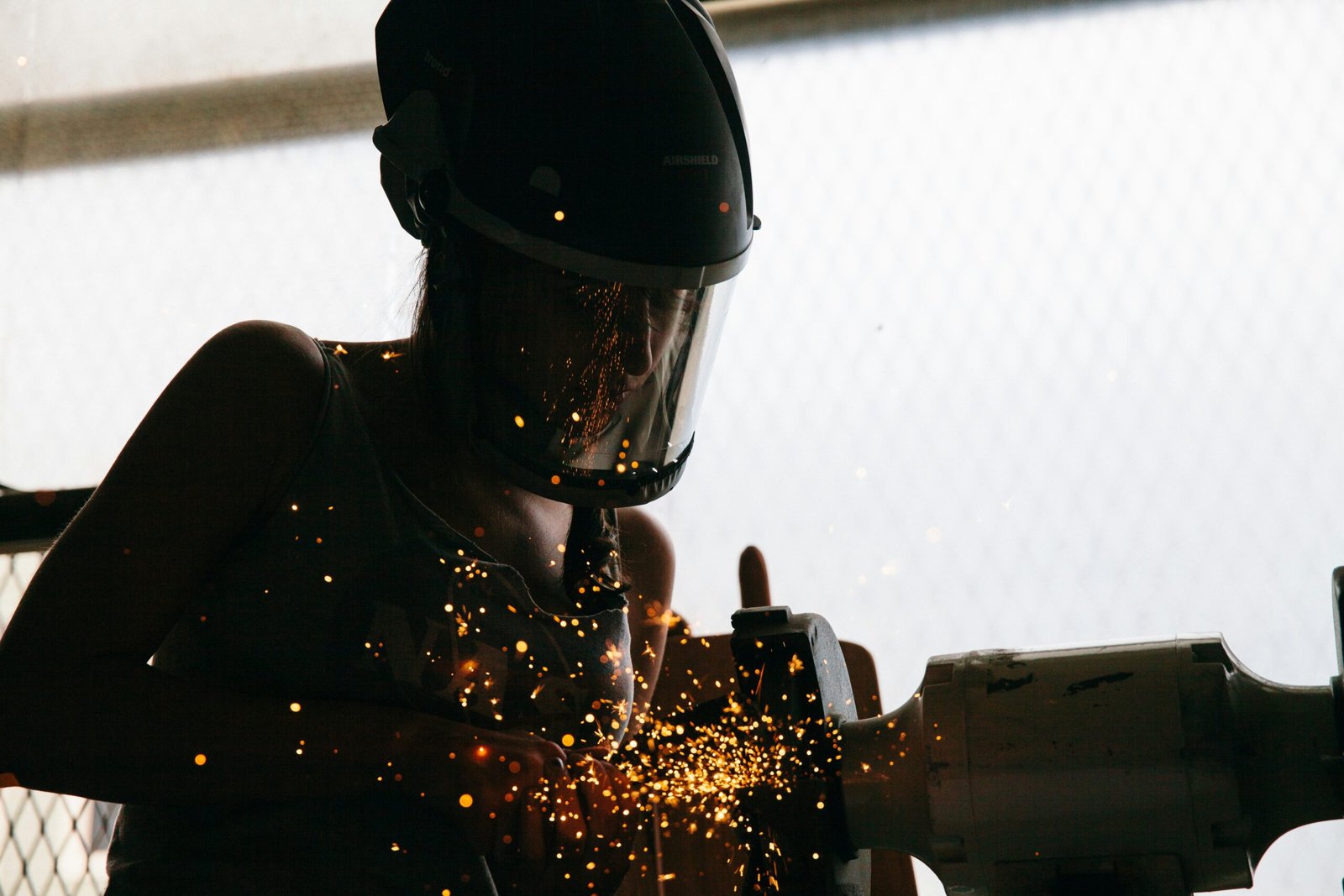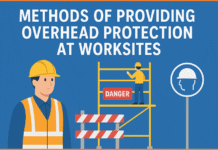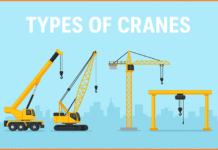Contents
Introduction to VRD in Welding Machines
Voltage Reduction Devices (VRDs) are integral components in modern welding machines, designed to enhance the safety of welding operations. Essentially, a VRD is an electronic device that reduces the open-circuit voltage (OCV) of a welding machine to safer levels (12 to 24 Volt) when no welding is being performed.
The primary purpose of a VRD is to mitigate these risks by automatically lowering the voltage when the welding arc is not active. This safety feature is very important in environments with wet or humid conditions, where the risk of electric shock is heightened. By reducing the OCV, VRDs help protect welders from potential electrical hazards, thereby promoting a safer working environment.
Moreover, the incorporation of VRDs into welding machines addresses several safety concerns. High OCVs can lead to severe electric shocks, which are not only dangerous but can also be fatal. For instance, when a welder is in contact with the electrode or the workpiece, the presence of a high OCV can cause a major shock. VRDs alleviate this threat by ensuring that the voltage remains at a non-lethal level when the arc is off, thus preventing accidental shocks.
In addition to enhancing safety, VRDs contribute to the overall efficiency and reliability of welding operations. By maintaining lower voltages during idle times, these devices reduce the stress on welding equipment, resulting in prolonged machine life and reduced maintenance requirements. This aspect underscores the importance of integrating VRDs into welding systems not only for safety but also for operational efficiency.
Voltage Reduction Devices is very important for modern welding machines, representing a component that ensures both safety and efficiency. By reducing the open-circuit voltage, VRDs protect welders from electrical hazards and contribute to the durability of welding equipment, establishing them as indispensable assets in contemporary welding practices.
How VRD Operates in Welding Machines
The Voltage Reduction Device (VRD) plays major role in enhancing safety within welding operations by regulating the open-circuit voltage. When a welder is not actively welding, the VRD diligently monitors the voltage level. The primary principle behind its operation lies in its ability to reduce the open-circuit voltage to a safer level, thereby mitigating the risk of electric shock to the welder.
At the heart of the VRD’s functionality is a sophisticated control system. When the welding operation is halted, the VRD instantly detects the cessation of the arc and intervenes by lowering the open-circuit voltage. Typically, the VRD reduces the voltage to a range that is considered safe for human contact, often around 12-24 volts. This reduction in voltage ensures that should the welder accidentally touch the electrode or the workpiece, the potential for harmful electric shock is dramatically decreased.
The VRD achieves this voltage control through an advanced electronic switching mechanism. This mechanism is designed to be highly responsive, ensuring that the voltage reduction happens almost instantaneously as soon as the welding stops. Conversely, when the welder resumes welding, the VRD must ensure that the voltage returns to the necessary operational level without delay. This is achieved through a seamless transition facilitated by the VRD’s internal circuitry, which rapidly elevates the voltage back to its required level, often around 70-100 volts, to reignite the welding arc.
This dual functionality of the VRD—lowering the voltage during idle periods and elevating it during active welding—ensures both safety and efficiency. The swiftness and reliability of this response are crucial for maintaining uninterrupted welding performance while safeguarding the welder against electrical hazards. The VRD’s ability to dynamically adjust the voltage is a testament to its sophisticated design and pivotal role in modern welding machines.
Benefits and Applications of VRD in Welding
The integration of Voltage Reduction Devices (VRDs) in welding machines brings a multitude of benefits, significantly enhancing both the safety and efficiency of welding operations. One of the primary advantages of VRDs is the substantial reduction in the risk of electrical shock to welders during non-welding periods. By lowering the open-circuit voltage when the welding machine is not actively in use, VRDs create a safer working environment, which is particularly crucial in hazardous settings. This safety feature is vital for protecting welders from potential electrical hazards, thereby fostering a more secure workplace.
In addition to improving safety, VRDs contribute to the overall efficiency of welding operations. By optimizing the open-circuit voltage, VRDs help in maintaining consistent power supply and reducing idle energy consumption. This efficiency translates to cost savings for businesses, as there is less wear and tear on the equipment, leading to longer machine lifespan and reduced maintenance costs. Furthermore, by minimizing the risk of electrical shock and associated injuries, VRDs indirectly contribute to lower insurance premiums and fewer worker compensation claims, enhancing the economic viability of welding projects.
VRDs are particularly beneficial in several specific welding processes and environments. In construction sites, where the complexity and scale of projects often pose increased safety risks, VRDs ensure that welding operations can proceed with minimized hazards. Similarly, in the shipbuilding industry, where welding tasks are frequently performed in confined spaces and challenging conditions, VRDs provide an added layer of safety. Maintenance work, which often involves welding in unpredictable and varied environments, also greatly benefits from the implementation of VRDs. These devices ensure that safety standards are maintained, regardless of the working conditions.
Overall, the inclusion of VRDs in welding machines is a strategic move towards promoting safety, efficiency, and cost-effectiveness in welding operations across various industries. The ability of VRDs to mitigate electrical hazards while optimizing operational efficiency makes them indispensable in modern welding practices.
Regulations and Standards for VRD Usage in Welding
The regulatory landscape governing Voltage Reduction Devices (VRDs) in welding equipment is intricate and rooted in a commitment to safety and compliance. Various safety standards and regulatory requirements mandate the implementation of VRDs to ensure the protection of welding operators against electrical hazards. Key organizations such as the Occupational Safety and Health Administration (OSHA) and the American National Standards Institute (ANSI) play pivotal roles in setting these standards.
OSHA, for instance, enforces stringent guidelines under CFR 1926.351, which explicitly calls for the use of VRDs in specific welding operations to minimize the risk of electric shock. These regulations are crucial in mitigating the inherent dangers associated with welding, thereby promoting a safer working environment. Similarly, ANSI’s standard Z49.1 provides comprehensive safety practices for welding, cutting, and allied processes, which include the necessity of VRDs in welding machines to ensure operator safety.
Globally, other safety organizations such as the International Electrotechnical Commission (IEC) and the European Committee for Standardization (CEN) also contribute to the regulatory framework. The IEC 60974-1 standard, for example, outlines the requirements for the safety and performance of welding equipment, emphasizing the integration of VRD technology to enhance safety measures.
Compliance with these standards is not just a legal obligation but also a best practice that fosters a culture of safety within the welding industry. Adhering to these regulations ensures that welding operations are conducted within the legal parameters, thereby safeguarding the well-being of operators and minimizing the risk of workplace accidents.
Emerging trends indicate a growing emphasis on the advancement and adoption of VRD technology. Future regulations are expected to incorporate more stringent requirements, driven by technological advancements and a deeper understanding of occupational hazards. As the industry evolves, staying abreast of these regulatory changes will be crucial for welding operators and manufacturers to maintain compliance and uphold safety standards.





